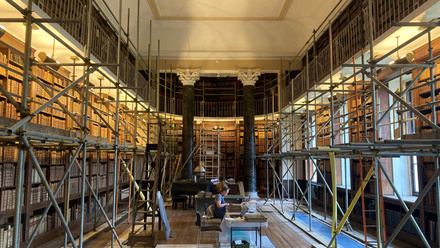Blenheim Palace is embarking on a ground-breaking £2m conservation project - the first of its kind at a Grade 1 Listed World Heritage Site – in an effort to combat the effects of climate change.
In 2023 the Oxfordshire UNESCO World Heritage Site will be removing the glass ceiling of its 18th century Orangery and replacing it with a timber and slate structure in the spirit of Vanbrugh’s original design.
It’s believed to be the first time this type of reinstatement programme has been carried out on a Grade 1 Listed building.
The glass roof was installed after a fire broke out in an adjacent bakery and damaged the original roof structure in 1861.
As its name suggests, the Orangery was originally a greenhouse with large windows creating the perfect climate to support the growth of oranges and lemons over the winter months.
Kelly Whitton, Head of Built Heritage at Blenheim Palace, is leading the work which is expected to be finished in Autumn 2023.
“We don’t actually know exactly what the Orangery looked like pre-fire; there is very little information in the archives and post 1716, due to dwindling finances, Vanbrugh’s historic architectural plans from 1704 would have been scaled back,” she said.
“We are restoring the Orangery to what we understand to be its original form, based on research and pre-fire evidence remaining on site."

Orangeries are found at many stately homes in Europe and for members of aristocracy in the 1700’s having an orangery was a status symbol and indication of wealth.
Over the past 300 years Blenheim Palace’s Orangery has been used as a greenhouse, theatre, offices, art gallery, events space and today sees thousands of visitors each year enjoy lunch and afternoon tea in the historic room.
Morwenna Slade, Head of Historic Building Climate Change Adaptation at Historic England, said:
Thoughtful projects such as this demonstrate how conservation can be used to respond to the impacts of climate change, forming positive and proactive solutions.
“At Historic England, we believe heritage is part of the solution and continued use and reuse of existing buildings is fundamental to reducing both embodied and in use carbon emissions.
The Orangery conservation project is being fully funded by visits to Blenheim Palace.







